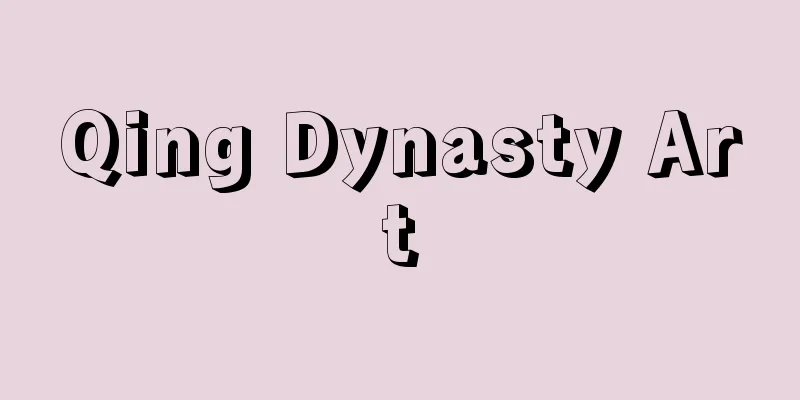"The True Dream of the Dawn Crow" - Akegarasu no Masayume

|
…(1) Kabuki dance. Shinnai and Kiyomoto are famous. In 1772 (An'ei 1), Tsuruga Wakasa no Jō I composed “Akegarasu Yume no Awayuki” (Dream of a Dream of Snow), which became popular as a Shinnai masterpiece. In February 1851 (Kaei 4), it was performed as “Akegarasu Hana Nuregoromo” (Akegarasu Flower Cloth), a Kiyomoto version, at the back of the eighth act of “Kanadehon Chushingura” at the Edo Ichimuraza Theater, and in March of the same year, it was performed as a Shinnai piece at a play in Chikugo, Osaka (Onishi's play). In 1853, it was transformed into a Gidayu piece “Akegarasu Yuki no Akebono” (Akegarasu Snowfall), later known as “Akegarasu Rokka Akebono” (Akegarasu Rokka Akebono), and the Shinnai piece “Nochi no Masayume” (Akegarasu Queen Mayume), the Tokiwazu piece “Yume Awayuki” (Dream of a Dream of Snow), and the same-named but different piece “Shinmeigarasu” (New Akegarasu) were created. … From [Tamenaga Shunsui]...An author of human interest stories from the late Edo period. His real name was Sasaki (Sasaki) Sadataka, and he was commonly known as Echizenya Chojiro. He was the second head of Shinro-tei, Sanro, the second Nansen Shosomahito, the head of Kyokun-tei, and Kinryu Sanjin, and was known as Tamenaga Masasuke (Assistant) and Tamenaga Kinryu as a lecturer. He is said to have come from a merchant's family in Edo, but the details of his early life are unclear. From the end of the Bunka era (1804-18), while running the bookstore Seirindō, he became a disciple of Shinrokutei, Ryūtei Tanehiko, and Shikitei Sanba, and in 1819 (Bunsei 2) published the first part of his debut human interest novel Akegarasu no Chi no Masayume. He continued to publish works one after another, and by 1827 had established himself as a human interest novelist. From [Madame]...The title of a Shinnai-bushi song. The original title was Akegarasu no Chi no Masayume. It can also be written as Masayume. The Shinnai-bushi song Akegarasu was famous, so a sequel to it, Akegarasu no Chi no Masayume, was published (1819-24), a human interest story written jointly by Ryutei Rijyo and the second Nansen Shoso Manjin (later known as Tamenaga Shunsui), and became a bestseller. Using the title, Fuji Matsuroku wrote the lyrics and composed the song in May 1857 (Ansei 4). It is divided into three parts. The first part is about Urazato Tokijiro, who has escaped from the red-light district, on his journey to Sarue-oshima in Fukagawa, and is an interesting tune that skillfully uses tunes from other schools. ... *Some of the terminology explanations that refer to "The True Dream of Ming Crow Queen" are listed below. Source | Heibonsha World Encyclopedia 2nd Edition | Information |
|
…(1)歌舞伎舞踊。新内と清元が有名。1772年(安永1)初世鶴賀若狭掾が作曲した《明烏夢泡雪(あけがらすゆめのあわゆき)》が新内の名曲として流布し,1851年(嘉永4)2月江戸市村座の《仮名手本忠臣蔵》8段目の裏に,清元に移した《明烏花濡衣》として舞台に上り,同年3月大坂筑後の芝居(大西の芝居)で新内で演じられた。以後53年大坂浜の操り芝居で義太夫《明烏雪の曙》,のちの《明烏六花曙》になり,新内《明烏后真夢(のちのまさゆめ)》,常磐津《夢泡雪》,同名異曲《新明烏》が作られた。… 【為永春水】より…江戸後期の人情本作者。本名は鷦鷯(ささき)(佐々木)貞高,通称は越前屋長次郎。2代目振鷺亭(しんろてい)主人,三鷺(さんろ),2世南仙笑楚満人(なんせんしようそまひと),狂訓亭主人,金竜山人とも号し,講釈師として為永正輔(助),為永金竜を名のった。江戸の町家の出身らしいが前半生の経歴は明らかでない。文化(1804‐18)末年ごろから書肆青林堂を経営するかたわら,振鷺亭,柳亭種彦,式亭三馬に入門,1819年(文政2)に処女作の人情本《明烏後正夢(あけがらすのちのまさゆめ)》初編を発表,次々に作品を世に送り,27年ごろには人情本作者としての地位を確立した。… 【真夢】より…新内節の曲名。本名題《明烏後真夢(あけがらすのちのまさゆめ)》。〈正夢〉とも書く。新内節の《明烏(あけがらす)》が有名だったので,その後日談として滝亭鯉丈(りゆうていりじよう)と2世南仙笑楚満人(後の為永春水)の合作による,人情本《明烏後正夢》が出版され(1819‐24),ベストセラーになった。その題名をかりて富士松魯中が1857年(安政4)5月に作詞作曲したもの。上中下に分けられる。上は廓を抜け出た浦里・時次郎が,深川猿江大島への道行で,他流の曲節を巧みに用いた面白い曲節。… ※「《明烏后正夢》」について言及している用語解説の一部を掲載しています。 出典|株式会社平凡社世界大百科事典 第2版について | 情報 |
<<: "Akegarasu no Chi no Masayume" - Akegarasu no Chi no Masayume
Recommend
Yokai - Yokai (English)
Hungarian novelist. An outstanding writer of Roma...
Township - Go
In ancient times, it was an administrative unit be...
americaine (English spelling)
...This consommé can be called differently depend...
Caterpillar
Also called a caterpillar track. A running device ...
Feedback divider - A feedback divider
... a circuit that obtains an output of n (n is a...
metaphor
…In other words, in order to maximize the evocati...
Sangoushiiki
A Buddhist book from the early Heian period. 3 vo...
Gas centrifuge
...In this case, the equipment used to examine th...
Hendrikus Josephus Franciscus Maria Sneevliet
1883‐1942 A Dutch socialist, he was a member of th...
Sariwon - Sariin
A city in the western part of North Hwanghae Prov...
Julian Tuwim
1894‐1953 Polish poet. Born in Lodz to a Jewish ba...
Ichijo - Ichijo
A Buddhist doctrinal term. It is a translation of...
Printing Bureau - Insatsukiyoku
〘Noun〙 Abbreviation of the independent administrat...
Prince Furuhito no Oe - Prince Furuhito no Oe
[raw]? [Died] Taika 1 (645). Yoshino? A prince of ...
Calcondures, D. - Calcondures
…The latter was translated into various Western l...


![Fuse [Village] - Fuse](/upload/images/67ccb52016e31.webp)

![Olympus [Mount] (English spelling) Olympos](/upload/images/67cb23fc218e4.webp)




